
FIELD GUIDE
A K - 7 4
VERSION 20.0 (BETA)
This research paper is an ongoing project and is based on an original draft compiled and developed by Ekie. For the most part, it is solely based on original research and painstaking comparative study. At the time the project was started, there were no books to be found on the subject that covered this area of firearms research in such great detail. Much of the earliest information was gathered through years of multiple conversations in the early 1990's among a great many early Kalashnikov collectors and enthusiasts, to which we owe a huge debt of thanks. However, this document will never be complete since it's purpose is to continuously gather information as it is discovered, for the purpose of sharing with others who share our mutual interest and respect for the firearm, the history and the men behind them. Because of this, I am sure the information contained in thois work will never be totlaly complete or accurate, from the moment it is published, and therefore I wish to apologize for any errors or ommitions you might find in the following text.
We have made a great attempt to refrain from using guesswork, and in those cases where we felt it was important to include information that had yet to be fully vetted (for the sake of continuity or completeness), we have noted the uncertainty of the information. In any case, if the reader finds any erroneous information herein we want to be notified so we can correct or remove it in a timely manner. Above all, we do not wish to spread misconceptions or false data points. This is an ongoing project and continues to be upgraded as time allows and as new information emerges. Every change will be peer-reviewed as much as possible to ensure it's accuracy, based on the best evidence available at the time. There are likely small errors in the text below, but details are constantly being more narrowly defined so hopefully the overall accuracy has increased somewhat compared to the earliest version.
Please contact us if you have any good images of rifles that show clear serial numbers or features, especially if the materiasls do not seem to conform to the information you might find here within each particular classification. Having said this, please be aware that replacement parts, factory refurbishments, off-site rebuilds and field modifications often cloudy the water and confuse the uninformed observer. We have made every effort to wade through the endless confusion of refurbished or rebuilt rifles to provide the reader with a clearer understanding of the evolution of this interesting firearm.
PURPOSE
The Russian AK-74 infantry rifle has been the subject of a continuous and quite persistent improvement process since it's inception. After a long series of developemental prototypes were more or less hand-built between 1965 and 1972, the rifle pattern was eventually adopted by the Soviet armed forces as thier primary individual infantry rifle and type-classified as the Avtomat Kalashnikova model of 1974. Afterwards, initial batches were produced which carried over most of the prototypical designs, but revisions were continuously made before it reached full operational production capacity at the Izhevsk Arsenal in 1976. Since this time, Soviet engineers have continued to work on improving the rifle, and as a result some very notable and interesting design and/or manufacturing improvements were made on the production lines as time went by. This is one reason the rifle has piqued the interest of so mnay small arms enthusiasts over the years.
Some changes were simply singular modifications to individual parts, enacted to simply ease production costs or take advantage of new manufacturing techniques. However, other modifications were grouped as part of a more complex Product Improvement Program (PIP). In the following document, you will see that rifles made between these large scale upgrades can be identified and grouped into specific subtypes. Some of these subtypes are undocumented, while some are quite well known today.
There are a few good books on the broader areas of this subject, but sadly few really accurate articles dealing with the production details of the AK-74 truly exist in either Western or Russian publications. It also appears, after much investigation and personal interviews, that the factory showed very little interest in keeping track of the great multitude of minor production changes instituted over this long period of time. If any official declassified Russian factory production records still exist today, the details have yet to be discovered (or divulged) to the growing number of enthusiastic AK fans both inside and outside Russia. Also keep in mind that much of the information related to this subject floating around on the internet is not free from innacuracies and inconsistentcies. Therefore, for the time being, it is simply best to rely heavily on unmollested, surviving rifles for research purposes. But this is what makes it so intriguing, right?
TYPE CLASSIFICATIONS, SERIAL NUMBER RANGES, and "TRANSITION PERIODS"
Traditonal Russian small arms nomenclature is generally based on the designer's name, year of official adoption, with associated subtypes identified in some cases by such things as receiver type, barrel length, buttstock (folding or fixed), and the ability to mount major serialized matched accessories such as night vision devices or silent fire devices (PBS). Most of the time these subtypes were identified only because they served a special purpose or mission, and not becuase they were simply upgraded. In many cases, what might seem to be a major upgrade to some Western observers was sometimes not considered valid enough (to the Russian military) to warrant a subtype prefix, and extensive changes were often made without Russian type classification changes being introduced at all. In other words, we as military collectors and students of small arms have had to create our own nomenclature to descibe these subtypes. The authors of this document have tried not to muddy the waters by introducing unneaded subtype nomenclatures, but it has been necessary in order to distinguish parts designs to explain the evoltionary timeline of the rifle.
You will note that within each classification shown below, certain years have been grouped together according to a continuous and uniform use of like design features. Keep in mind that Izhevsk did not wait to introduce changes at the ending or beginnings of calender years in most cases. Although we have noted in the text the estimated transition time for major parts modifications, for clarity and convenience we have made an attempt whenever possible to segment the main rifle classifications (and thus the serial number ranges) by the year. This is possible because in many cases we are dealing with "transition periods" rather than pricisely defined cutover dates. If clear evidence of a notable and important mid-year change warrants a new variation to be identified, then we have reflected this in the production year as indicated. This is shown by the addition of either an "Early" or "Late" notation. To limit confusion for individuals who are researching serial numbers correct for certian years, we concentrated on cleanly separating them by calender year. This made more sense to us since historically, Soviet parts transition periods often lasted from just a few months to sometimes over a year. In fact, they tended to waste nothing. Even if a new part was deemed an improvement, as long as the old part fit and worked correctly, it was normally still used until supplies were exhausted. For instance, if a sub-contractor arrived two months late with an older style minor part, it was most likely still accepted and used unless ti no longer met the specifications of the military.
In any case, in our guide each subtype has been judged through the observation of multiple changes made at the same time. In some cases individual changes were made at other times and these have been noted as such due to their significance to the collector. We have tried to concentrate on groups of changes that are strong evidence for an undocumented Product Improvement Program (PIP). Dates of introduction were determined by the actual dates of manufacture of the rifles themselves, and by cross-checking sources and reference materials, both public and private. Keep in mind that it is much easier to determine a definitive starting point for new parts or modifications, but ending dates are dictated by how many older parts remain "in the system", for instance deep in the bottom of factory parts bins under piles of newer style parts) and so forth. It is not uncommon to see some older parts being reintroduced for a short run of rifles several months after they have been officially redesigned.
A NOTE ABOUT AK-74 SERIAL NUMBER FORMATS
It was not until 1980 that a unique serial numbering system was fully implemented for the AK-74 rifle that was contiguous from year to year. Before that year, the serial number ranged were apparently restarted for each year of production. In this period, the year of manufacture was used as part of the serial number for record keeping purposes. Due to this rather confusing and convoluted method of accounting, there are many pre-'80 rifles with serial numbers higher than those made at a later date. This has caused quite a bit of confusion among collectors who are not familiar with the system. Also note that fixed and folding stock AK-74 rifles were built within the same serial number range, so it is impossible to separate the two to determine what percentage of each type made up the total number of units produced.
DESCRIPTIONS
Listed below each subtype is a short list of the most important, defining production changes, rather than a total description of the rifle since the other features of the rifle are basically AK-74 standard and would take more space to properly describe than we have time to do so here.
HELP US KEEP THIS DOCUMENT ACCURATE!
The following document is just a general guide, and although we have tried to provide important (but verified) details, a great deal of missing information may need to be added as more examples of complete firearm are discovered and examined. A few of the features listed may be hard for the novice to decipher without detailed images or hands-on inspection, so we have tried to include photographs whenever possible. Many other features are known to all who have looked at photos of the many versions, but we include them here for the sake of continuity.
Although we feel very confident the current version has been reviewed and revised adequately to ensure it's accuracy, there is certainly always room for improvement. Any question among ourselves as to the validity of the information, or to the dates of introduction, is noted in the text. In some cases, both popular assumptions and/or not-quite-verified details have been left out to ensure the overall integrity of the entire document. Most of the included features and modifications have been cross-referenced from several sources if available, including hands-on examples, factory manuals, personal accounts of inspected weapons, military journals, interviews, printed and video media. Our primary goal is to present the most accurate document of this type anywhere available, and one that the reader could feel reasonably confortable relying on.
We welcome any interested parties to contact us with corrections, additons, or other improvements. Our current project involves the compilation of an accurate peer-reviewed database of serial number and date code information that will elaborate on principal design refinements in the series, and help preserve the rich design history of these firearms. Therefore, we invite all visitors to e-mail us with any comments, further details, images or information that would elaborate, rebuke, or affirm this document in any way.
---Tantal
The story of the AK-74 rifle actually started in the mid-1960's with a group of enginners workign on a small caliber high velocity (SCHV) concept amminuition cartridge at the TsNIITochMash Design Bureau, which is located in Klimovsk. Rifles modified to test the new round were rechambered AKM's. At that time, the cartridge involved was a new 5.6x41mm round being developed by TsNIITochMash, where work on the modified AKM's was made possible with help of an engineering team from the Kalashnikov Design Bureau in Izhevsk.
In outward appearance, these early prototypes were almost identical to a standard AKM or AKMS rifle, except for a less severely curved magazine which was still conventionally fabricated from stamped steel. By 1969 the team perfected a much more advanced, lethal and AK-friendly cartridge, measuring 5,45x39mm, and a suitable magazine to feed it. Once the specifications of this promising new experimental round were ironed out, a greater effort was aparently put forth at Izhmash towards developing and building a series of more and more thought-provoking and refined prototypes.
In 1969, the advanced A-017 prototype was built. This rather advanced protoype was chambered in the new high velocity 5,45x39mm cartridge and to the author's knowledge (and opinion) appears to be the first bonefide "AK-74" to have ever been produced. The A-017 had quite a few very identifiable AK-74 pattern parts, to include a grooved laminated buttstock, deeply scalloped laminated handguards, and a new investment cast 45-degree gas block which it eventually shared with later production AKM rifles. Amminition was fed from a newly created horizontally-ribbed aluminum 30-round box magazine.
The overall results of both the ammunition and the rifle were apparently encouraging and growing military interest (and pressure) resulted in the creation of the A-3 family of prototypical rifles, most of which are dated 1972. Models of this series included options of either traditional wood or new experimental bakelite handguards, as well as four different types of buttstocks. These included a fixed plywood, a new fixed bakelite, a standard underfolder or a promising new sheet metal side-folding design. For the first time the ubiquitous muzzle brake (which identifies the AK74 rifle model for so many) was fitted to a integrally threaded front sight base. A new 62-degree investment cast gas block was also developed, which was for the first time strictly specific to 5,45mm rifles.
Several slightly more advanced variants based on the A-3 series were built during 1973 for official military acceptance field trials, which wer ehled against competing designs from other bureaus. By this time, it was clear that standard wood furnishings (and the optional stamped/welded sheet metal side-folding buttstock) were favored over a more conservative underfolding version. Whether or not the brown and green-colored bakelite furniture of the A-3 experimentals passed strict field trials is a matter of conjecture today, but in any case it apparently did not get approval for use on the new rifles and was thus relagated to only a few batches of test samples, some of which was used on 1974-dated AKM rifles presented as gifts to decorated Russian border guards.
A few months after field trials were completed, the 1973-psttern rifles were officially adopted by the Soviet armed forces and type-classified as the Avtomat Kalashnikova model of 1974. A GRAU index code of 6P20 was awarded to the fixed-stock model while 6P21 designated the folding-stock model. As is customary when any new Russian rifle design is adopted to replace another one, it would take Izhmash roughly 12-18 months to fully retool. This was especially true when the projected schedule for closure and transfer of AKM/AKMS assembly lines (and resources) was not at first clear. In fact, work on 7,62mm AK rifles would be conducted for at least another two or three years.
For the most part, these exist today only as museum exhibits. Illustrations of these early models appear in the first editions of the official Soviet army AK-74 operators manual, and it is quite likely that the basic format was entered into initial service testing more or less as shown. Although they share many features with the prototypical 1972-dated rifles, the initial production models most likely did not include some of the elements of the prototypes, or they were very rapidly changed. For instance, the early muzzle brake seen on the 1973 acceptance models (see image below) was standardized with a slightly shorter threaded collar by 1974 and the straight-angled early pistol grip appears to have never gotten past the initial test batch. These early rifles also had no accessory lug (bayonet lug) on the gas block, but sometime during 1974 it were added to the standard production models.
Other unique features remained to distinguish these early type-classified rifles. The prototypical angled trigger guard possibly survived for a year or so, and the muzzle brake seems to have had an extra gas vent hole (no. 4) like the field trial 1973 models. The first few years saw rifles equipped with laminated wood, but the pattern was not completely standardized and included an assortment of one-offs and/or modified AKM parts. For instance, some buttstocks were outfitted with a unique tensioning spring between the stock and the receiver (this item was quickly abandoned). The buttplate was a very thick and oversized ribbed rubber design, but was replaced with a slightly thinner version within a year. The muzzle brake was serialized to the rifle on the first issued production batches. The Type A cast rear trunnion was a crossover part from the AKM series, and was of the 3-rivet "forked" variety with a square-shaped center lightening cut creating short extended forward rivet supports.
The rifle in the images shown here is one of the original 1973-dated pre-production field test models, which can be found today on display at the Artillery Museum in St. Petersburg, Russia. It is quite similar to the first rifles that were issued to the Soviet military. Features you see here that were not in the initial series production batches include the long collar muzzle brake, the straight-angle pistol grip, and the gas block having no accessory lug. Note that the early pre-production AK-74 magazines appear to be made from a different bakelite composition with a speckled appearance.
Furniture: laminated wood
This initial variant was widely seen in the early years of the Soviet War in Afghanistan, and today is popularly identified as the "early style AK-74" through several unique visual clues to include it's obsolete yet distinctive looking "transitional" 62-degree gas block design, rubber padded buttplate and half-moon psttern muzzle brake device.
In late 1975 or early 1976, efforts to kick-start production of the new AK-74 were greatly multiplied in order to facilitate accelerated field issue as a direct replacement for the AKM. AKM production was already starting to slow down and was in fact slated to be shuttered just a year later. Re-allocations of tooling equipment and floorspace greatly increased the Izhmash factory's capacity to produce more AK-74's, although the new rifles were assembled alongside AKM's until at least until the middle part of 1977.
At first, the new rifle was provided mainly to frontline specialized units such as the VDV (airborne assault forces), who used the folding stock version to great affect in the early stages of the Afghan conflict. Even so, only after several years of war did AK74 production allow the military to issue enough of the new firearms to overtake the AKM in raw numbers as the primary infantry rifle for all Soviet forces in-country. In any case, as well as being the first pattern widely issued it was also destined to be the first type to gain international recognition due to photograghs taken of the model being brandished by marching Soviet airborne troops in a May Day parade. In the early 1980's, examples of this type were the first captured in Afghanistan and studied with great anticipation by Western intellegence organizations, and even documented in free press publications. In fact, the example seen in the side view images displaye dhere are one such rifle which is currently under the care of the US Army.
As far as the design, it no longer included the early angular three-rivet trigger guard or the experimental Bakelite handguards, both deemed prototypical and apparently abandoned in favor of more traditionally styled parts. Both the Type A gas block (with accessory lug) and the Type A solid-sided front sight base were retained through 1976. A lightening groove cut into the barrel under the lower handguard facilitated mounting of an early style of under-barrel grenade launcher, but adoption of the GP-25 in 1978 made this an unecessary weakening of the barrel so this was later omitted.
Most examples were equipped with AK-74 specific furniture, but possibly due to a need to meet surge production quotas (and the need to use up AKM parts) many early rifles left the factory with wood furniture consisting of an AKM upper mated to a modified late AKM lower handguard fitted with a new AK-74-style rear tensioning spring. The buttstock still retained the rubber-coated buttplate of the prototypes, but it was slightly slimmer, a bit thinner and fit the contour of the buttstock much better. By 1976, the older Type A short-arm square cut rear trunnion was changed to a lighter, investment cast Type B version with a distinctive D-shaped center cutout. This part was a late AKM-series crossover part with short forward extension arms that retained the standard "AKM" rivet pattern on early AK-74 receivers. Initally, AK-74 gas tubes were serialized on the bottom of the tube between the handguards, but by late 1976 this practice was dropped in favor of a three-digit "hen-scratched" numbering style that was always outwardly visible, being located on the forward flange of the gas tube.
Furniture: laminated wood
By 1977 we start to see the first of what is considered a modern style Soviet AK-74 rifle. Surge production, generated by a need to re-arm with the new rifle, was at it's pinnacle and a great number of these types of rifles were built. Izhevsk always remained the only Soviet arms factory making the AK-74, and production totals in this period peaked at a staggering estimated 1 million rifles a year. 1977 was a major "transitional" year, judging by the great number of notable improvements standardized to include a new standadized barrel assembly using the now well-known 90-degree gas block, a lightening cut front sight base, and a fresh rear trunnion design that changed the basic rivet pattern of the receiver for the remainder of it's lifespan.
A redesgned barrel marks this model from it's predecessors. The original 62-degree gas block was only used on series-produced rifles for little more than one year,until the new 90-degree gas block was placed into service by early 1977. The old design was reportedly phased out due to a bullet shear problem associated with the high velocity M74 round. Soviet engineers found that drilling the gas port in the barrel vertically, inside a groove of the rifling, eliminated the problem. The gas block was modified to match the gas vent hole in the barrel, both in angle and location. A new Type B front sight base with lightening cuts (indentions) on each side was also introduced sometime in early-mid 1977. This new front sight base can rarely be found installed on barrels with the earlier archaic 62-degree gas block, which would apparently mean nothing was wasted.
Sometime in late 1978 or early 1979, the more typically found strengthened AK-74 style rear trunnion (Type C) with hyper-extended (or "forked" forward support arms) bacame standard equipment. This meant, for the first time, that the rivet pattern of the AKM/AK74 series rifle had to be changed, which also required changes to the optical rail (used on the AK-74N variant to mount night vision devices) which was mounted to the left side of the receiver using one of the rivets common to the rear trunnion. Other notable improvements included a change to short tick selector stops (as opposed to the earlier long AKM style) and the addition of a left side selector shaft depression by 1980. The rubber-coated buttplate was apparently discontinued by the middle of 1977 as some early 1977-dated rifles had them while later examples did not. 1979 was the last full year that a four-digit calender year was marked on the trunnion, as most 1980 rifles are marked with only the last two digits. Late 1979 or early 1980 also marked the beginning of an entirely new (restarted) serial numbering sequence for the AK-74 (and AKS-74), which was contiguous from year to year.
Furniture: laminated wood
It has recently been discovered that the Tula Arsenal was tooled up as a secondary supplier of 5,45mm AK-74 rifles, which were produced at that factory by at least 1979. The transition from AKM production must have been part of the original planning early on, and work to concert the factory was no doubt started very shortly after the 7,62mm rifle assembly lines were shuttered in 1977. A small number of samples of the "Tula" AK-74's, all of the fixed stock variety, have been documented in recent months, and while most are of 1981 (or more rarely 1980) vintage, at least one has surfaced with an earlier 1979 year date. It hindsight it would seem quite logical that Tula would be utilized to produce this bread and butter rifle model, but apparently when they were awarded the production contract for the smaller AKS-74U in 1981, logistics dictated conversion to just that one model leaving Izhmash as the sole supplier of the AK-74 and AKS-74. How many AK-74's were actually produced at Tula before the changeover is anyone's guess, but serial numbers for late-date rifles are known to have exceeded 900,000.
In any case, the pedegree of these rifles is quite clear as the Tula version is a very distinctive model showing classic "Tula" styling and influence in each and every part. In general plan view the Tula AK-74 has retained a great number of the earlier mid-70's Izhmash design elements, most likely due to hand-me-down tooling, to include the archaic 62-degree gas block configuration. This would indicate that either the barrel is drilled with a relocated 90-degree gas port, or the reported problems associated with bullet shearing on the early pattern barrel were greatly exaggerated. Also note the particularly "Tula-styled" wood furnishings and more textured surfaces of the machine-finished metal parts.
Furniture: laminated wood
In late 1979, a new Soviet zig-zag muzzle brake went into production and is our benchmark feature for this subdivision. The class also introduced an updated receiver cover which can be identified via a noticeable dimple added directly about the selector lever shelf. We also see the last use of a few traditional AKM type parts, such as the smooth style magazine catch lever and the narrow-shouldered rear sight base. In the first part of 1980, the numerical year prefix went from the standard four digit format to just the last two digits (i.e. from "1980" to "80" only). Bakelite AK-74 magazines continued to be issued for the most part, although new PA6 (polyamide) magazines were reported in Afghanistan by 1982.
This version was placed into domestic production by the German Democratic Republic (DDR) in the early 1980's, with several interesting and innovative changes. For instance, a new bent wire monostrut folding buttstock was designed to allow fitment to the standard fixed stock rifle. Also, new plastic and bakelite furniture was used throughout and a Soviet-designed optical rail was made standard on each rifle (in Russia at the time, only a handful of specially equipped rifles were fitted with such a device). While Soviet-made night vision devices were imported and issued to East German troops, a unique magnified daylight riflescope was developed by the East German NVA specifically for use on their AK-74's (ZFK 4x25mm). In the late 1980's, East Germany introduced several interesting and innovative variants, to include a heavily modified 5.56 NATO version aimed at the international market. Sadly, all further development ceased when Germany was reunified.
Furniture: laminated wood
This pattern is easily identified by the use of a unique combination of old and new parts, and was the first to use several new castings. It continued to use the same zig-zag brake, but newly integrated parts included a "lazy rib" Type C top cover and Type B mag catch with an extended, "beaver-tailed" lever, both in 1982, and a newly redesigned investment cast trigger piece with a thin finger lever. This part replacing the older AKM-style part sometime in late 1982 or early 1983. Also, the Type B bolt carrier reached production by late 1982 or early 1983, with it's heavier flat-backed cocking handle. The new style cast Type B rear sight base became standard although it was actually introduced in 1981. An extended length magazine catch (with side ribbing) was also introduced in either late 1982 or early 1983. A new glass fiber reinforced polyamide "plum" magazine (first reported by Peter Kokalis in 1982) became an issue item in Afghanistan by this time, although the traditional red colored Bakelite magazine was in much wider distribution for the remainer of the war.
This variation is popularly known in the West because it was this pattern (and it's tooling) that the Bulgarian state arms industry was provided with when they adopted the AK-74 for domestic production. Bulgaria first assembled AK-74 and AKS-74 rifles from parts and parts kits imported from both Izhevsk and Tula arsenals, and these were mostly of the late 1982 or 1983 pattern. By the mid-80's, they began building near-exact domestic copies of the same rifles fitted with both wood, and later on, domestically-produced black plastic stocks. Some Soviet-supplied parts continued to be used in even these for a time, to include a great deal of Soviet-made plum colored polyamide furniture exported to Bulgaria. Although Bulgaria changed little of the basic Soviet style metalwork, they did eventually introduce a domestic simplified version of the two-piece brake design, as well as a hollow-back trigger that were apparently not of Soviet origin. Kazanlak (Bulgarian state arms factory) produced these rifles into the early 1990's, and a great deal of these rifles and parts have been imported into the US in the last few years as demilitarized parts kits.
Furniture: laminated wood
These rifles were the last of the wood-stocked rifles, and can be identified in the field by the use of a radically new hammer-forged muzzle brake, a new trigger design, and the lack of slots in the handguards. By late 1983, the laminated upper handguard had lost it's cooling slots and a new "smooth-collar" cold hammer forged two-piece brake first reached production.
This is the last standard production version of AK-74 to employ traditonal pinned-on barrel assemblies, since in 1985 a radically new method was employed to fit barrel parts on military rifles. The 1983-85 rifles were also the last of the wood-stocked examples, since glass-reinforced polyamide plastic buttstocks and handguards started replacing the traditional wood furnishings ny late 1985. It is also not uncommon to see rifles of this period fitted with wood buttstocks mated with newer pattern polyamide handguards, or vice versa. This may or may not be how some left the factory as new, since it is well known that RPKS-74 and SVD rifles of the wood-to-plastic transitional time period were assembled in a similar mix-master fashion.
There are also original but rare wood-furnished rifles known to exist with punch-pressed barrels, and some rare factory-assembled polyamide-furnished rifles with pinned-on barrel assemblies were also issued, so an interesting transitional period no doubt existed between late 1984 through 1986. Due to the overlap of these two features, it seems that polyamide furniture and the punch-pressed barrel assembly technique were both adopted at almost the same time within the factory environment. Fixed wood-stocked rifles in this period were still issued with the standard AKM-type bakelite grip, but some were apparently also outfitted with the AKS-74 model's polyamide pistol grip. This period in production, in the middle of the Afghan war, was a time of hectic transition and of much interest to the modern Kalashnikov enthusiast.
Furniture: laminated wood transitioning to polyamide plum-colored plastic
The "plum" AK-74, the first all plastic-stocked Russian infantry rifle, went into production by late 1985 but the material and color of the furniture was far from the only modification introduced that year. It was no doubt only one phase of a major PIP (product improvement program) upgrade which also included a radically new punch-pressed barrel attachment system. First used in mid-1985, this assembly technique involves the use of a hydraulic press to dimple the front sight base, gas block and rear sight base into precisely made matching depressions on the barrel, which permanetly secures them. The "punch-press" method is used in lieu of traditional and time consuming drilling/pinning of the barrel assembly parts. This precise and automated procedure proved to be a success, and continues to be used on most Izhevsk, Molot and Tula manufactured AK-type rifles destined for Russian military issue to this day.
A great many new parts and features were introduced throughout the late 1980's, so many in fact it has been quite difficult to keep track of them. In 1986 we saw the introduction of the Type B style right side selector depression on the receiver. The Type C rear sight leaf with half-tick stadia incex marks was introduced by late 1987. 1986 also saw the introduction of a new bolt carrier. The new design transferred the piston shoulder (where it threads into the carrier) onto the carrier body itself. The Type C cleaning rod with an integral (machined-in) patch jag slot (with no accessory threads) was also being issued by 1986.
Another important (but mostly unknown) modification resulted from a concerted effort to maximize the precise and secure alignment of the muzzle brake. Most likely entering service around 1986 but currently only documented on 1987-89 rifles, the first and only known two-piece front sight base in the history of the firearm was created by mating a separate threaded bushing to the old front sight base tower (minus it's original threaded extension). The new threaded bushing appeared to be chromed and was elongated (with a lengthened bearing surface) and was pinned to the barrel by it's own individual retaining pin. The purpose of this labor-intensive change was to eliminate excessive wiggle or play between the brake and the barrel, to possibly allow for the clocking of the threads to the brake to ensure solid seating between the brake and the sight base tower, or to allow replacement if the bushing became worn or corroded. No doubt prolonged use in Afghanistan had shown that constant cleaning of built-up carbon eroded the threads and bearing surfaces enough to cause problems in alignment and therefore, accuracy.
By 1987, and new barrel trunnion was introduced that utilized a new "two-rivet" feed ramp design. One rivet held the feed ramp to the trunnion block in the bottom section, as before, while an additonal rivet was used to secure the upper section where the bearing surface for rotating the bolt head is located. Also that year, the so-called reciever "trigger bump" was extended to transverse both sides of the trigger lever hole, and an updated Type C selector lever started production.
In very early 1988, a new stamped sheet metal gas tube retaining lever replaced the standard milled unit previously used, as well as a new matte-finished polyamide pistol grip that better matched the plastic handguards and buttstock. By 1988, the bolt carrier left side lightening cut was changed from a vertical mill cut to a "ski-jump" style horizontal cut, and by late 1988 a new trigger guard with an extended rib was introduced. This rib extended all the way to the very end of the lever surface.
Sometime in late 1988 or early 1989, the carbon scraper grooves on the gas piston were omitted in favor of a solid piston head design. Also, late in 1989 or early 1990 the short collar two-piece brake was modified by extending the threaded collar to became what we know today as the modern long-collar "AK-74M" type. Sometime that same year, the Type D front sight base went into production.
Furniture: plum-colored polyamide plastic, transitioning to black by 1991
The AK-74M, often called "Russia's Black Rifle", is basically a very late production AKS-74, alreit with a number of notable improvements that readily identify it in the field. Adopted in 1991, the AK-74M was deemed such a major update that it received it's own official designation and awarded a new GRAU Index code of 6P34. It immediately replaced all AK-74 and AKS-74 rifles in the Russian procurement system, although of course many millions of perfectly good AK-74's and AKS-74's would continue to soldier on within the Russian military for years to come. Budgetary freezes imposed because of the break-up of the Soviet Union (and the resulting economic depression) finally loosened up enough to enable the rifle to see quite a bit of use during the First Chechen Conflict if 1994-1996. In fact, by 1999 almost 3.5 million rifles were produced, althogh this total included all sorts of other AK-74M based models in various calibers and barrel lengths. These variants, officially named the AK-100 and coliqually referred to as the "Century Series", were mainly developed for export (and actually included two versiosn chambered in 5,56x45mm NATO caliber). However, three models of series were found to be quite effective in fulfilling roles vacated by the defunct AKM and AKSU, and were eventually offically adopted by the Russian military in 2001. Their design features are not within the scope of this guide, but they do deserve mention here as close relatives of AK-74M. They include the 5,45x39mm short-barrel AK-105 carbine, the 7,62x39mm AK-103 rifle, and the 7,62x39mm short-barrel AK-104 carbine. Worldwide sales of the various models based in whole on the AK-74M platform were slow at first, but continue to grow. For insance, In 2005 Russia signed a contract with Venezuala to deliver 100,000 new AK-103 rifles, and possibly even more importantly, reached an agreemant with that nation to license local production of the AK-103 in that country.
To create the new AK-74M rifle, Izhmash developed an excellent "solid" reinforced polymer side-folding buttstock which utilized the rugged and relaible standard AKS-74 rear trunnion hinge mechanism. The instant befits of this were well received, as it not only provided the stable shooting platform, ergonomics, comfort and extreme temperature resistance of the normal fixed plastic stock but also offered all the handiness, compactness and mobilty of the folding stock variety. Universal issue meant every soldier on the battlefield would enjoy the benefits. By 1992, the rear trunnion that held the buttstock was strengthened with a thicker stock mounting hinge and a larger diameter pivot pin. The angle of the rear edge of the trunnion was slightly changed (by about 6 degrees) from that is the older AKS-74 rifle, but the handguards and pistol grip were still of the standard late 1980's polymide materials and design. Through the lifespan of the model, there were several mor eor less minor changes to the buttstock. Early stock buttplates featured an offset, square-shaped buttstock release push button but within two or three years it transitioned to the current round-shaped design. Very early (pre-type classified) rifles even featured plum colored glass-reinforced polyamide furniture, but by early 1991 all plastics appeared to be true black. The dark plum magazines of the late 1980's era were also changed to a true black color but these took several years to become widely available in the field and were uncommon, at least during the time of the First Chechen War (1994-96).
Unlike previous AK models, a universal optics mount was made standard equipment on all AK-74M rifles as part of the basic specifications. The mount consisted of a modified AK-74N one-piece cast steel dovetail rail, rivetted to the left side of the reciever. A long slot was molded into the left side of the new polymer buttstock to provide clearance for the rail when the stock was folded. Whether enough optics would ever be made available to make this device utilitarian for most troops was uncertain, but it did greatly increase the percived need (and presure on logistics) to develop and procure such devices. Although the AK-74M would of course still use the standard traditional side-mounting Russian small arms night vision devices, this was the first time in Kalashnikov history a standard infantry rifle was being issued from the onset with the ability and intention of using dedicated daylight optics. In fact, back in 1987 the first daylight sight had already been authorized and type classified (1P29) for use on the Kalashinov family, but it only saw limited use thus far, mainly due to costs. However, many new and more modern designs, mostly closed and open type collimating sights, were tested (both officially and unofficialy, with mixed results) throughout the 1990's and 2000's in some of the various small-scale conflicts the country participated in, and the military was already well aware of their virtues.
Other important changes rounded out the AK-74M/AK-100 package. A very early prototypical dual-port muzzle brake was tested but did not make production, being instead replaced by a conventional brake with a newly extended threaded collar. The threaded bushing for mounting of the brake onto the rifle was again made part of the front sight base, but with an extended bearing surface. This resulted in a much more secure and precise muzzle brake alignment. Although the first versions of the new front sight base had them, eventually all of the lighting cuts on it's surfaces were made solid. A slightly changed Type D rear sight keaf with short index marks, Type B handguard retainer lever, Type C magazine catch, Type D cleaning rod, and Type C magazine well dimples are all considered identifyinbg features of this newly type-classified rifle model, but were more or less carry-over designs from the late model AK-74. An early transition from the carryover Type C AK-74 ribbed receiver top cover, to a new Type D smooth cover made from a thicker sheet metal, occurred by 1992. AK-74M continued to use the type C bolt carrier, but starting in about 1992, the right side carrier lightning cut (shoulder) was typically done at an angle, and by 1994 nearly all AK-74M carrier shoulders were cut at a noticeable angle. Also in 1992, the new strengthened rear trunion mentioned above (with a heavier hinge assembly using a 5.5mm pivot pin instead of the standard 4.5mm AKS-74 design) was standardized. It can be identified in images by a new center cutout on the hinge extension which exposes part of the hinge pin. Another important modification was the Type B barrel trunnion that uses a "third rivet" as a bump start for the bolt (rather then being a part of a feed ramp extension). It was introduced in limited use on civilained rifles around 1991, but only became standardized on military rifles by about 1996 or early 1997.
Furniture: black glass-reinforced polyamide plastics
A product improvement program carried out in the mid-2000's introduced several upgraded parts to the standard AK-74M rifle. Many of these changes coincided with a contract to produce new AK-103 7,62mm rifles for the nation of Venezuela, along with the introduction of new under-barrel grenade launchers (UBGL's). By 2006, a new Type E smooth top cover began to appear which featured a rolled lip along the edge and corner area of the ejection port. This extra bend more closely follows the contours of the bolt carrier shoulder which more adequately keeps dust and debris from entering the receiver. This top cover generally has a smaller "selector shelf", which is matched to a selector lever with a correspondingly smaller outer lip.
Also by 2006, a new Type C recoil spring guide (based on a style used in the 1990's on the Saiga-12 shotgun) started being issued on standard issue AK-74M and AK-100 rifles and carbines. This design was only seen previously on rifles equipped with grenade launching equipment, and features a top-mounted spring-loaded push-button that replaces the old extended hook design. The push button keeps the top cover from accidently coming loose under the excessive recoil forces generated when firing grenades, and must be manually depressed during disassembly of the rifle to release the guide from the top cover. The pattern has apparently been issued on a much larger scale on rifles with and without launchers since it's introduction on grenade launching rifles in the mid-1990's. This was also the case with the older hooked style recoil spring guides, which started out being a part for special G/L rifles and was later standardized for issue on all rifles.
Another overlooked design improvement observed on late model AK-74M's is yet another modification to fascilitate the launching of grenades. A newly standardized gas block was introduced around 2009 that features a much more robust bayonet lug boss. The boss (where the lug integrates into the barrel journal cylinder of the gas block) was changed from the typical parallel-walled cross section of any standard AK lug into a wedged structure with a much wider root at the top. This modification serve to enhance the stability of the new GP30M and GP34 grenade launchers and makes the mounting interface self-centering and self-adjusting (even after extensive use and wear). This reduced unwanted side-to-side movement of the assembly which naturally increased the overall accuracy of the projectiles.
A new polymer buttstock also started to be utilized on AK-103 and AK-74M assembly lines around 2006 which featured a horizontal slot machined into the lower rear "heel" area near the buttplate. This cut goes all the way through the material of the stock body, creating a channel that is used to locate and secure a leather retaining strap which is part of the standard grenade launching pad assembly. Earlier versions of this buttstock employed a metal loop embedded into the bottom of the stock body shell, and were normally only found on rifles equipped with the launcher. However, by 2006 this design was apparently dropped in favor of a simply machined slot cut into the standard buttstock. The slotted pattern is now seen on a majority of newer rifles (both with and without UBGL's) and can thus be considered a standard issue item for all models.
Most of the other significant areas of improvement seen in the last decade have dealt mainly with the use of accessories. In the last few years, several factory-sponsored programs have been carried out with the goal to enhance the AK-74M's ergonomics, handling, and ability to more easlily mount devices such as optics and electronic aiming equipment. In the field thus far, these programs have resulted in only a few narrowly used add-ons, such as railed handguards which can be retro-fitted to earlier rifles. Many aftermarket companies have also stepped into the void by introducing a wide variety of furnishings and other modern attachments that have filled a gap in military needs, some of which have all but become standard issue in certain unit of the Russian armed forces. Many of these items are either inspired by or actually made by Western companies. Being of an aftermarket nature, they are very interesting but well beyond the scope of this article.
Sadly for the factory and the people who depend on its revenue to survive, in 2011 officials of the Russian government bluntly announced to the press that until a genuinely revolutionary upgrade in firearms design was developed, there was no immediate need to procure more infantry rifles for the military. For the first time in decades, no military assault rifle orders were contracted with Izhmash for the entire year of 2012. What this might mean for future developments of the AK-74 is anyone's guess, but what we do know is that the firearm, as we know it today,. will continue to serve the Russian military for many, many years to come.
Furniture: black glass-reinforced polyamide plastics
A FINAL NOTE:
We are sure that the reader is quite aware that the documentation of the evolution of the AK-74 is far from being completed here. A great number of modifications, some no doubt of great evolutionary significance, are already on the horizon for the AK-74 rifle which, regardless of it's age, has apparently yet to see it's zenith or potential. Even now, well-publicized goverment-sponsored projects are underway at both Izhmash JSC and other military research intitutes assigned to develop all sorts of modern devices and add-ons, good or bad, to supposedly drag this venerable war veteran into the "21st Century". Barring the availabilty of some new, unanounced and revolutionary weapons system (and a budget to field it), there is no doubt that the Russian military will continue to utilize and develop their most legendary and successful small arms design. Besides, without question the AK-74 has thus far met every goal and expectation of it's design, completing each mission it has been tasked to perform even though many of those applications undoubtedly stretched it's performance perameters to their absolute limits. We feel confident and hopeful that there will be a pressing need to add more classifications (and additions to classifications) to this document in the not to distant future! ---Tantal and Ekie
OF
RUSSIAN PRODUCTION VARIATIONS
FOR
BASED on an ORIGINAL PUBLICATION by Ekie & Tantal
EDITED BY Tantal
UPDATED: 07 APR 13
INTRODUCTION
SMALL CALIBER AK PROTOTYPES, IZHMASH, 1965-1973
EARLY CONCEPT RIFLES & ADVANCED PROTOTYPES
SerNo: Prototypical (PX-prefix coded)
Production totals: <300
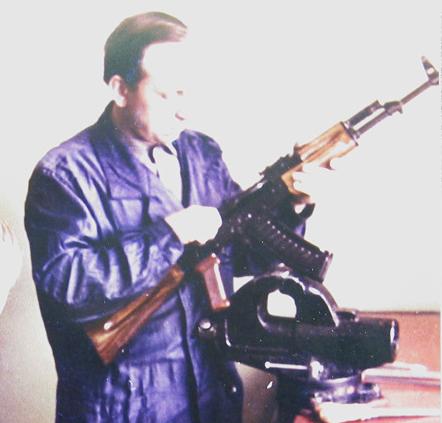
AK-74, IZHMASH, 1973-1975
ACCEPTANCE PROTOTYPES, FIELD TRIAL MODELS & PILOT PRODUCTION
SerNo: Prototypical (PX-prefix coded)
Production totals: <500
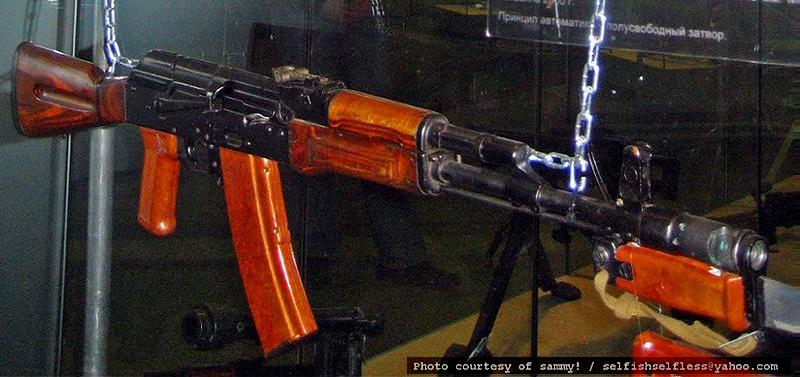
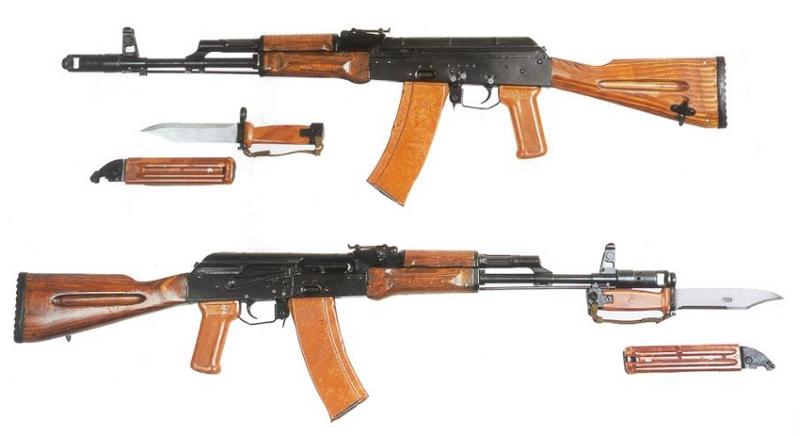
Pistol Grip: straight-angle Bakelite grip
Muzzle Brake: half moon (earliest version with possible extra gas vent hole)
Front sight base: Type A
Cleaning Rod: Type A
Gas Block: Type A (with accessory lug on production models)
Lower Handguard Retainer: Type A
Rear Sight Base: Type A
Gas Tube Take Down Lever: Type A, late AKM
Rear Sight Leaf Assembly: Type A, late AKM
Barrel Trunion: Type A
Receiver Top Cover: Type A, late AKM
Recoil Spring Assy: Type A, late AKM
Selector Lever: Type A, late AKM
Bolt Carrier: Type A
Trigger Group: Type A
Trigger Guard: angled, three-rivet design
Magazine Catch Lever: Type A, late AKM
Rear Trunnion: Type A, late AKM transitioning to Type B
Buttplate: Type A, extra thick rubber coating
Magazine Well Dimple: Type A
Left Side Selector Hole: Type A
Right Side Selector Depression: Type A
AK-74, IZHMASH, 1975-1976
EARLY SERIES PRODUCTION OF THE FIRST PATTERN RIFLE
SerNo: Revolving with year of production
Production totals: approx. 750,000-950,000 units
(includes both fixed and folding stock rifles)
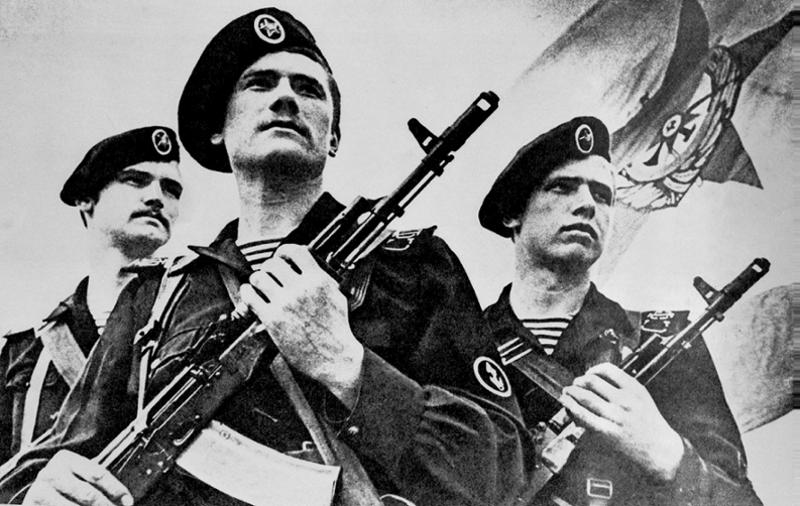
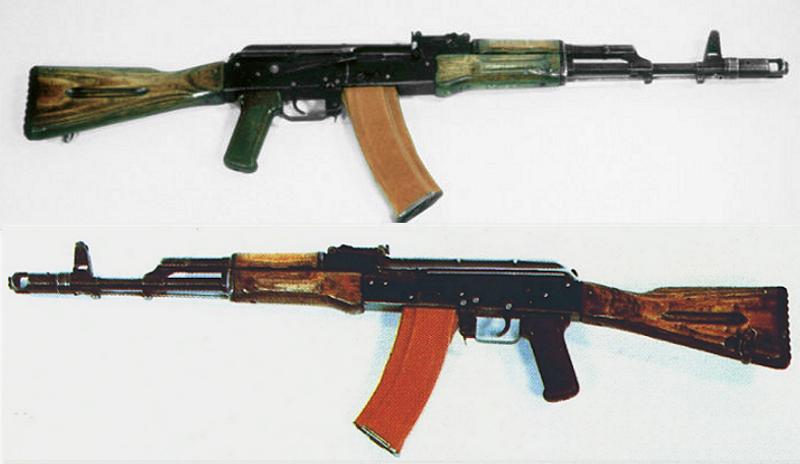
Pistol Grip: AKM Bakelite
Muzzle Brake: half moon
Front sight base: Type A transitioning to Type B
Cleaning Rod: Type A
Gas Block: Type A transitioning to Type B
Lower Handguard Retainer: Type A
Rear Sight Base: Type A
Gas Tube Take Down Lever: Type A, late AKM
Rear Sight Leaf Assembly: Type A, late AKM
Barrel Trunion: Type A
Receiver Top Cover: Type A, late AKM
Recoil Spring Assy: Type A, late AKM
Selector Lever: Type A, late AKM
Bolt Carrier: Type A
Trigger Group: Type A
Trigger Guard: Type A, late AKM
Magazine Catch Lever: Type A, late AKM
Rear Trunnion: Type B late AKM forked
Buttplate: Type A
Magazine Well Dimple: Type A
Left Side Selector Hole: Type A
Right Side Selector Depression: Type A
AK-74, IZHMASH, 1977- Late 1979
A NEW BARREL ASSEMBLY STANDARDIZES THE DESIGN
SerNo: Revolving with year of production
Production totals: approx. 2.5-3.2 million units
(includes both fixed and folding stock rifles)
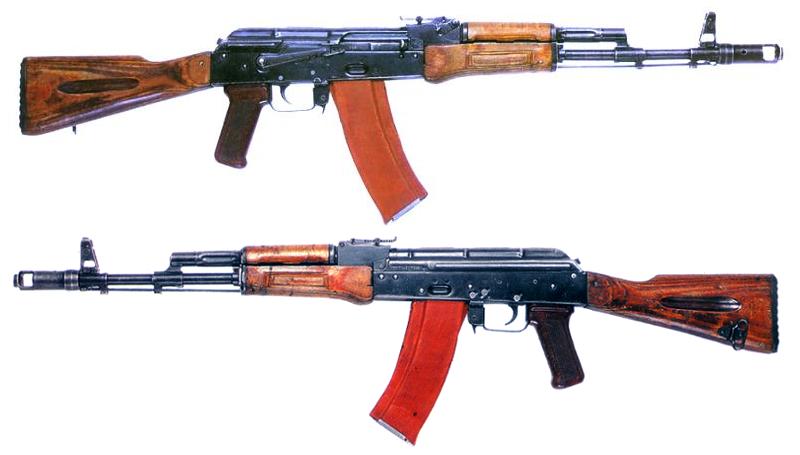
Pistol Grip: AKM Bakelite
Muzzle Brake: half moon
Front sight base: Type B
Cleaning Rod: Type A
Gas Block: Type B
Lower Handguard Retainer: Type A
Rear Sight Base: Type A
Gas Tube Take Down Lever: Type A, late AKM
Rear Sight Leaf Assembly: Type A
Barrel Trunion: Type A
Receiver Top Cover: Type A
Recoil Spring Assy: Type A, late AKM
Selector Lever: Type A, transitioning to Type B
Bolt Carrier: Type A
Trigger Group: Type A
Trigger Guard: Type A, late AKM
Magazine Catch Lever: Type A, late AKM
Rear Trunnion: Type B transitioning to Type C
Buttplate: Type A transitioning to Type B
Magazine Well Dimple: Type A
Left Side Selector Hole: Type A transitioning to Type B
Right Side Selector Depression: Type A
AK-74, TULA, 1979-1981
PRODUCTION MODELS FROM THE "OTHER" AK FACTORY
SerNo: as marked
Production totals: <1 million
(seems to be limited to fixed stock rifles only)
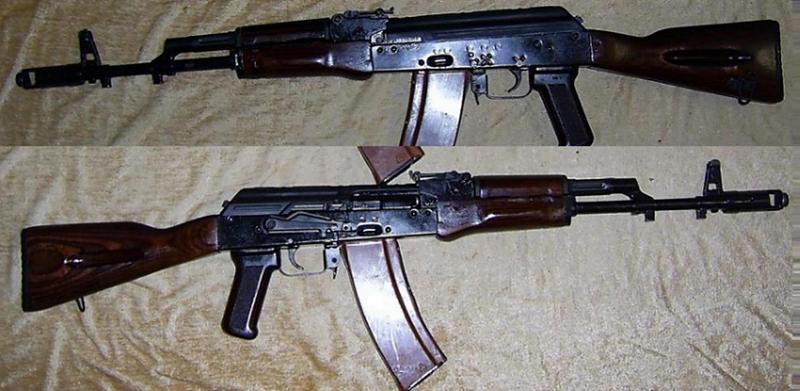
Pistol Grip: AKM Bakelite
Muzzle Brake: zig-zag (likely transitioning from half-moon on earliest examples
Front sight base: Type B
Cleaning Rod: Type A/B
Gas Block: Type A
Lower Handguard Retainer: Type A
Rear Sight Base: Type A
Gas Tube Take Down Lever: Type A, late AKM
Rear Sight Leaf Assembly: Type A with Tula font pattern
Barrel Trunion: Type A
Receiver Top Cover: Type A
Recoil Spring Assy: Type A, late AKM
Selector Lever: Type A, transitioning to Type B
Bolt Carrier: Type A
Trigger Group: Type A
Trigger Guard: Type A, late AKM
Magazine Catch Lever: Type A, late AKM
Rear Trunnion: Type B transitioning to Type C
Buttplate: Type B
Magazine Well Dimple: "Tula" pattern
Left Side Selector Hole: Type A transitioning to Type B
Right Side Selector Depression: Type A
AK-74, IZHMASH, Late 1979-1982
EARLY WAR UPDATES & WARSAW PACT LECENSE TRANSFERS
SerNo Range as marked: around 200,000-1,660,000
Production totals: approx. 1.4-1.6 million units
(includes both fixed and folding stock rifles)
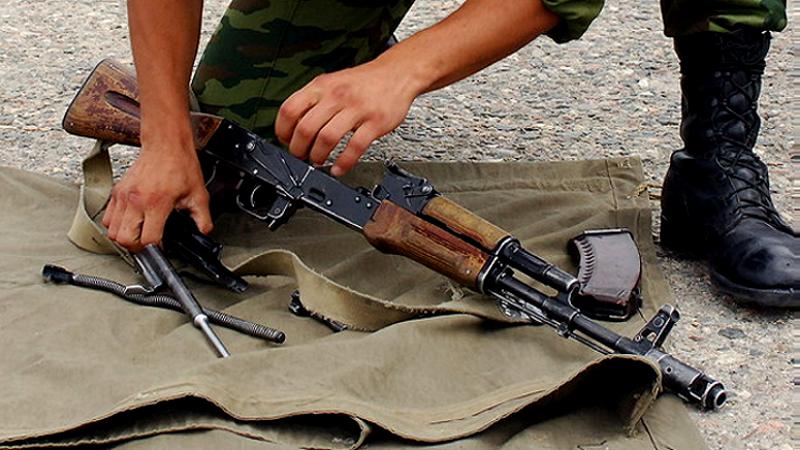

Pistol Grip: AKM Bakelite
Muzzle Brake: zig-zag (transitioning from half moon in 1979)
Front sight base: Type B
Cleaning Rod: Type A
Gas Block: Type B
Lower Handguard Retainer: Type A
Rear Sight Base: Type A, transitioning to Type B in late 1981
Gas Tube Take Down Lever: Type A, late AKM
Rear Sight Leaf Assembly: Type A
Barrel Trunion: Type A
Receiver Top Cover: Type B, transitioning to C
Recoil Spring Assy: Type A, late AKM
Selector Lever: Type B
Bolt Carrier: Type A
Trigger Group: Type A
Trigger Guard: Type A, late AKM
Magazine Catch Lever: Type A, late AKM
Rear Trunnion: Type C
Buttplate: Type B
Magazine Well Dimple: Type B
Left Side Selector Hole: Type B
Right Side Selector Depression: Type A
AK-74, IZHMASH, 1982-1983
FINE TUNING THE MID-WAR WORKHORSE
SerNo range as marked: around 1,660,000 - 2,240,000
Production totals: approx. 600,000 units
(includes both fixed and folding stock rifles)

Pistol Grip: AKM Bakelite
Muzzle Brake: zig-zag
Front sight base: Type B
Cleaning Rod: Type B
Gas Block: Type B
Lower Handguard Retainer: Type A
Rear Sight Base: Type B
Gas Tube Take Down Lever: Type A, late AKM
Rear Sight Leaf Assembly: Type C
Barrel Trunion: Type A
Receiver Top Cover: Type C
Recoil Spring Assy: Type A, late AKM
Selector Lever: Type B
Bolt Carrier: Type A, transitioning to Type B
Trigger Group: Type B, transitioning to Type B
Trigger Guard: Type A
Magazine Catch Lever: Type A, transitioning to Type B
Rear Trunnion: Type C
Buttplate: Type B
Magazine Well Dimple: Type B
Left Side Selector Hole: Type B
Right Side Selector Depression: Type A
AK-74, IZHMASH, Late 1983-MId 1985
LAST PATTERN OF WOOD FURNITURE RIFLES
SerNo range as marked: around 2,240,000 - 4,150,000
Production totals: approx 1.9 million units
(includes both fixed and folding stock rifles)
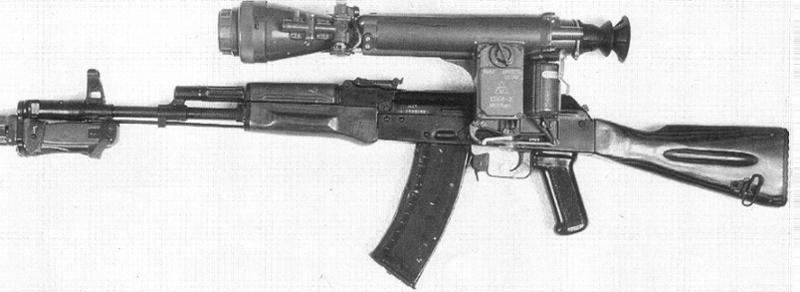
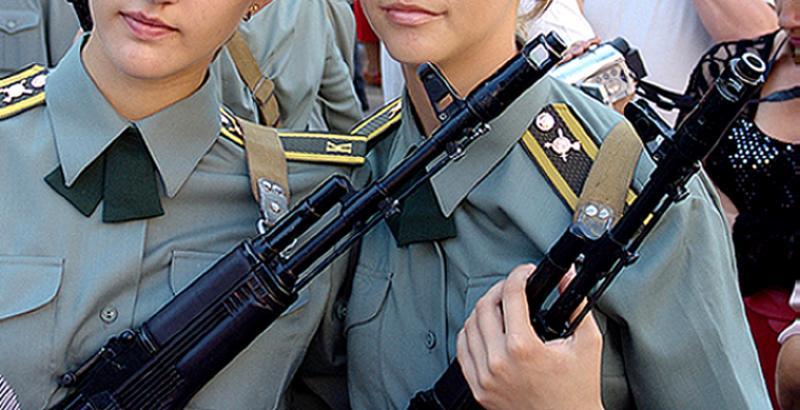
Pistol Grip: Bakelite AKM transitioning to gloss-finished plum polyamide
Muzzle Brake: smooth collar two piece
Front sight base: Type B
Cleaning Rod: Type B
Gas Block: Type B
Lower Handguard Retainer: Type A
Rear Sight Base: Type B
Gas Tube Take Down Lever: Type A, late AKM
Rear Sight Leaf Assembly: Type B
Barrel Trunion: Type A
Receiver Top Cover: Type C
Recoil Spring Assy: Type A, late AKM
Selector Lever: Type B
Bolt Carrier: Type B
Trigger Group: Type B
Trigger Guard/magazine catch lever: Type B
Magazine Catch Lever: Type B
Rear Trunnion: Type C
Buttplate: Type C
Mag Well Dimple: Type B
Left Side Selector Hole: Type B
Right Side Selector Depression: Type A
AK-74, IZHMASH, Late 1985-1991
THE POLYMER FURNITURE "PLUM" AK-74
SerNo range as marked: around 4,150,000 - 7,800,000
Production totals: approx. 3.65 million units
(includes both fixed and folding stock rifles)
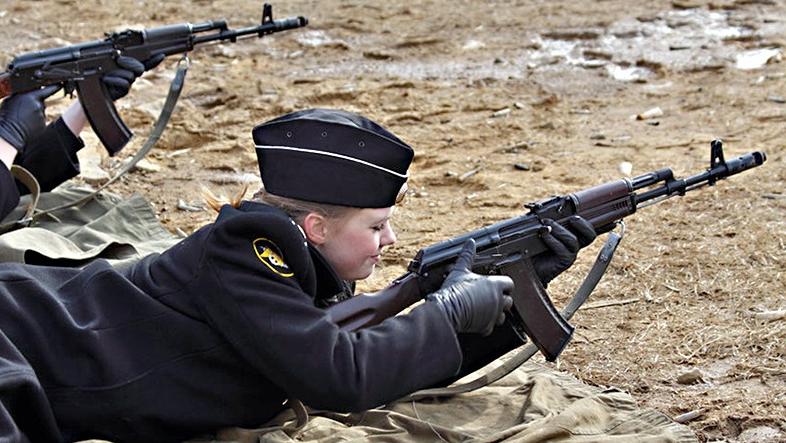
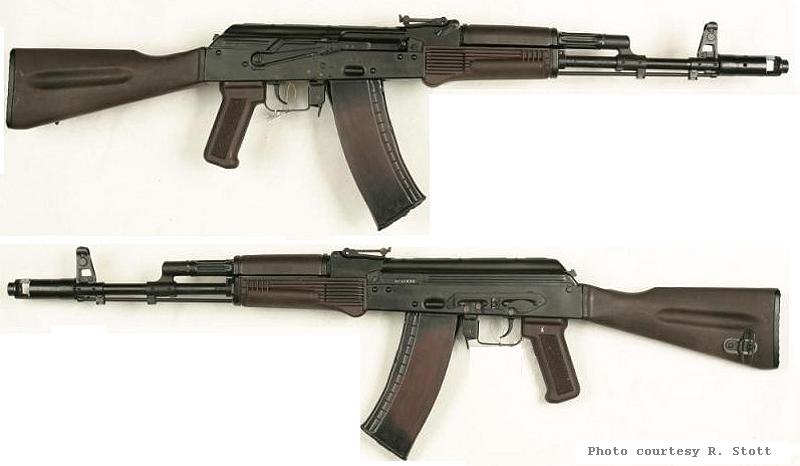
Pistol Grip: plum-colored polyamide, gloss-finish transitioning to matte finish by 1988
Muzzle Brake: smooth collar two piece, transitioning to the modern extended collar brake by 1990
Front sight base: Type C (early models may have used a Type B, very late units a Type D)
Cleaning Rod: Type B transtionign to Typ C
Gas Block: Type B
Lower Handguard Retainer: Type B
Rear Sight Base: Type B
Gas Tube Take Down Lever: Type A transitioning to Type B in 1988
Rear Sight Leaf Assembly: Type C
Barrel Trunion: Type A
Receiver Top Cover: Type C
Recoil Spring Assy: Type A
Selector Lever: Type B transitioning to type C
Bolt Carrier: Type C
Trigger Group: Type B
Trigger Guard: Type A transitioning to Type B
Magazine Catch Lever: Type B
Rear Trunnion: Type C
Buttplate: Type C
Magazine Well Dimple: Type B transtioning to Type C
Left Side Selector Hole: Type B
Right Side Selector Depression: Type B
AK-74M, IZHMASH, 1990-Present
THE "MODERNIZED" AK-74
SerNo range as marked: starting about 7,750,000
Production totals by 1999: approx. 3.5 million units
(includes small quantities of AK-100 models)
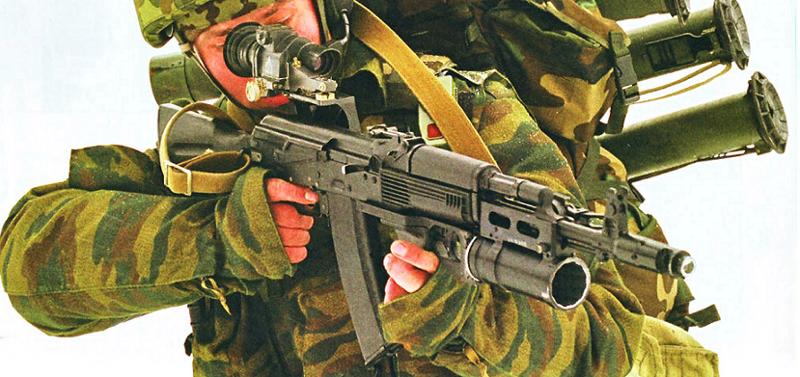
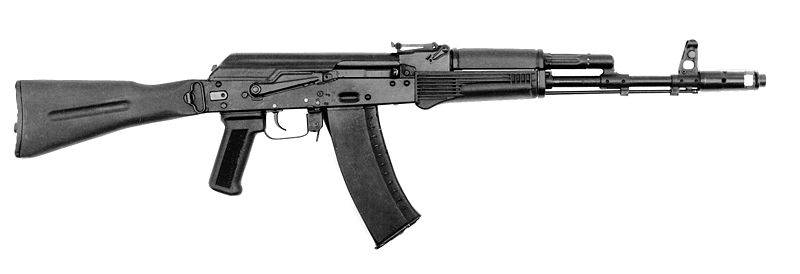

Pistol Grip: matching black plastic
Muzzle Brake: modern extended collar two-piece
Front sight base: Type D transitioning quickly to Type E
Cleaning Rod: Type D
Gas Block: Type B transitioning to Type C by 2006
Lower Handguard Retainer: Type B
Rear Sight Base: Type B
Gas Tube Take Down Lever: Type B
Rear Sight Leaf Assembly: Type D
Barrel Trunion: Type A transitioning to Type B
Receiver Top Cover: Type C transitioning to Type D
Recoil Spring Assy: Type B
Selector Lever: Type C
Bolt Carrier: Type C
Trigger Group: Type B transtioning to Type C
Trigger Guard: Type B
Magazine Catch lever: Type B transitioning to Type C
Rear Trunnion: AKS-74 transitioning to AK-74M type
Buttplate: Type D
Mag Well Dimple: Type C
Left Side Selector Hole: Type B
Right Side Selector Depression: Type B
AK-74M, IZHMASH, 2006-Present
PRODUCT IMPROVED MODEL
SerNo range as marked: Unknown
Production totals by 2013: Unknown
(includes small quantities of AK-100 models)
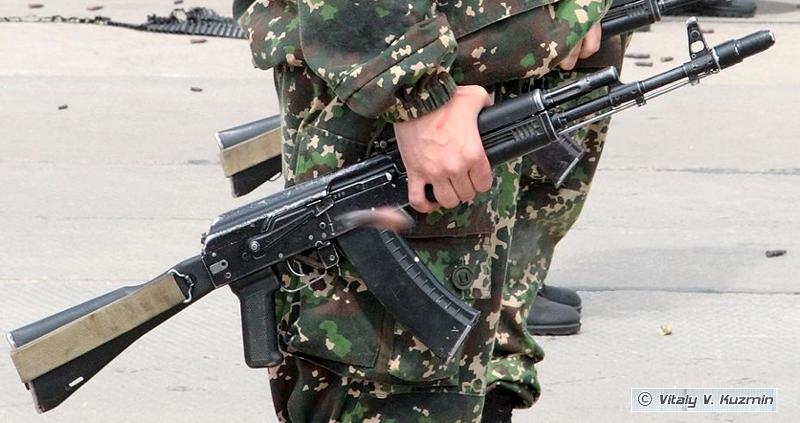
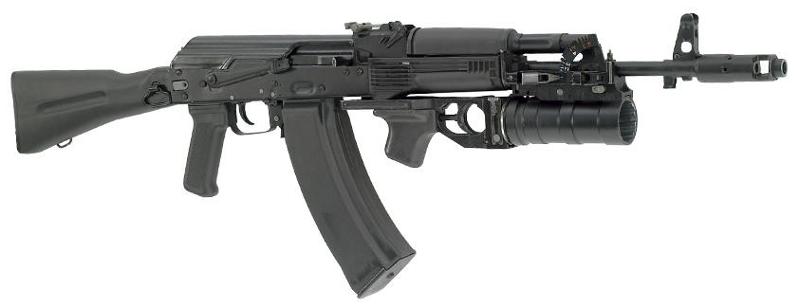
Pistol Grip: matching black plastic
Muzzle Brake: modern extended collar two-piece
Front sight base: Type E
Cleaning Rod: Type D
Gas Block: Type C
Lower Handguard Retainer: Type B
Rear Sight Base: Type B
Gas Tube Take Down Lever: Type B
Rear Sight Leaf Assembly: Type D
Barrel Trunion: Type A transitioning to Type B
Receiver Top Cover: Type E
Recoil Spring Assy: Type C
Selector Lever: Type D
Bolt Carrier: Type C
Trigger Group: Type C
Trigger Guard: Type B
Magazine Catch lever: Type C
Rear Trunnion: AK-74M type
Buttplate: Type D
Mag Well Dimple: Type C
Left Side Selector Hole: Type B
Right Side Selector Depression: Type B
© 1999, 2001, 2008, 2010, 2013
All rights to use of design, text, and images are reserved.
Please request permission before copying or redirection of material.
In most cases, non-commercial use will be immediately granted.